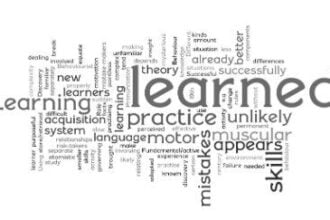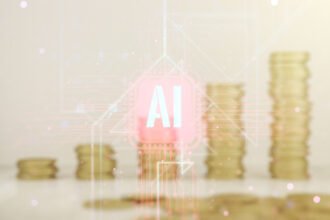Machine learning is changing the future of marketing in many beneficial ways. The Digital Marketing Institute reports that 97% of decision makers believe it is the future of marketing.
There are a number of tactics that marketers can pursue to optimize campaigns with machine learning algorithms. However, some of these strategies are more limited then marketers would like to think.
Big data technology has introduced a number of solutions for the marketing profession. It is able to handle massive data sets, which can aid marketers in a number of ways. They can use conversion data sets to:
- Automate the delivery of their advertisements based on the time of day that customers are most likely to convert
- Use artificial intelligence tools that rely on machine learning to optimize content for different visitors
- Pinpoint the demographics of customers that are most likely to convert and deliver ads to them appropriately
- Understand the most common questions that customers raise during chats with support services and chatbots and have automated responses for those inquiries
- Identify email headers and copy that boosts CTRs and conversions
- Discover the pain points that are most effective for upselling existing customers
According to an expert we spoke with from ASO, machine learning can be very powerful with big data. However, there are some challenges they must overcome.
It is not nearly as useful with small data, which was the only form of data that used to be available to marketers. Our colleague Jyoti Prakash Maheswari discussed problems with small data sets on his article on Towards Data Science. The principles he addressed are as applicable to marketing as any other machine learning application.
For many years, marketers had to work with small data sets. They simply did not have the storage space and resources to collect lots of data on their customers. Even companies that could afford to store large amounts of data rarely had the resources to process it and come up with actionable insights.
These companies are not ready to give up on the concept of working with smaller data sets. This can be problematic when you are trying to develop a sophisticated marketing strategy that is predicated on advances in machine learning technology.
What are the problems with using small conversion data sets to automate your marketing strategy?
A number of digital marketing platforms are making it easier for customers to exploit the benefits of machine learning. They usually require advertisers to track their conversions in real-time or manually upload them later.
Propel media is one of the companies that is using machine learning to help advertisers get the highest ROI. Many advertisers have said that they noticed a significant increase in campaign performance after they started using the CPA Optimizer, which relies heavily on machine learning technology.
However, the people that are familiar with this technology have warned against trying to use it with small conversion data. One Propel Media advertiser said that you generally need at least 50 conversions to get any value from it. The quality of the ad targeting is a lot higher when you have over 100 conversions.
Machine learning algorithms can make some very useful observations from conversions. They can extrapolate existing conversion data to significantly improve campaign performance. The problem is that the quality of those extrapolations is highly correlated to the number of conversions that have been uploaded.
Most other advertising platforms have similar technology. Companies using their own internal machine learning platforms to automate and optimize marketing strategies will find the same thing.
Marketers will face a little bit of a challenge when they try using conversion data for their machine learning algorithms. They need a minimum level of conversion data points to be able to create an effective machine learning strategy. They are also going to unfortunately discover that the quality of conversion data is dependent on an exponential decay factor. This means that the incremental benefits of adding additional conversions continues to shrink as new data is imported.
What does this mean in practice? Marketers will probably find that the marginal benefit of adding the first conversion to their data set is going to be huge. The value of the second conversion is going to be significant, but not nearly as strong as the first. Marketers will probably need to add five or six conversion data points to double the quality of the data that they earned from the first conversion that they added to their database. In order to double the quality of the data again, they might need to add another 20 or 25 data points. They might need to add 100 to 150 data points to double the quality again.
This means that marketers might need a substantial amount of data to make meaningful insights. The number of conversions they need is going to vary, depending on the complexity of the process that they are trying to optimize or automate.
For example, marketers might only need data from 20 or 30 conversions to determine the best performing ads that they are using. The machine learning algorithm might be able to identify the best ads with a 95% confidence interval with this amount of data.
However, they are probably going to need a lot more data to determine the best performing demographics to target. Marketers trying to use machine learning to segment or eliminate demographics might need at least a couple hundred conversions first.
Machine Learning Marketing Algorithms Require Sufficient Data
Machine learning is invaluable to marketing. However, marketers need plenty of data to develop quality algorithms. They should be prudent about determining the right data size and ensure enough conversion data is collected first.











